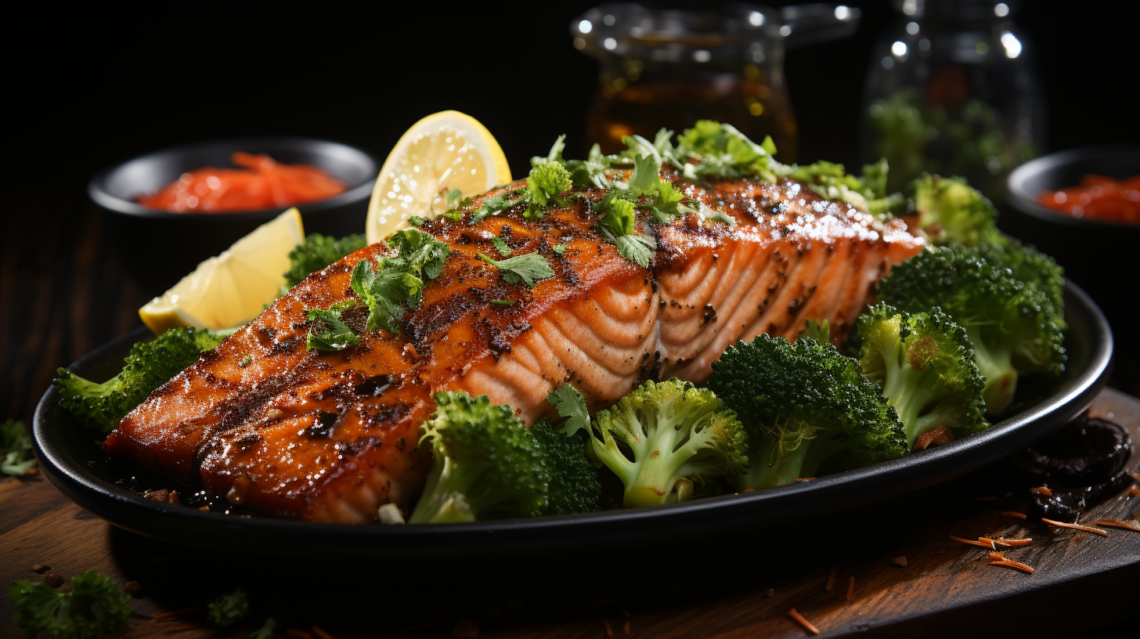
Crafting Nutritious Nighttime Meals
In the bustling rhythm of our daily lives, dinner often becomes just another task to check off our list. However, with a mindful approach, this evening meal can transform into a nourishing ritual that not only satisfies our taste buds but also supports our overall health. In this article, we delve into the essence of crafting healthy dinner ideas, focusing on the balance of nutrients, the importance of variety, and how we can adapt our evening meals to our individual health needs.
The Foundation of a Healthy Dinner
A well-rounded dinner consists of a harmony of macronutrients: proteins, carbohydrates, and fats, along with a generous helping of micronutrients from vegetables and fruits. The key is to find a balance that supports your individual health goals, be it weight management, muscle building, or simply maintaining a healthy lifestyle.
1. Proteins – The Building Blocks: Proteins are crucial for repairing and building tissues. Including a protein source, such as lean meats, fish, beans, or tofu, helps in muscle repair, especially if you’re physically active. Fish, like salmon, is not only an excellent protein source but also rich in omega-3 fatty acids, which are beneficial for heart health.
2. Carbohydrates – The Energy Providers: Carbohydrates are often misunderstood and sometimes wrongly vilified. Whole grains like quinoa, brown rice, and whole wheat pasta are excellent sources of energy. They are also packed with fiber, aiding in digestion and providing a sense of fullness.
3. Fats – The Essential Nutrients: Healthy fats are essential for nutrient absorption and brain health. Incorporating sources like avocados, nuts, and olive oil can enhance the nutritional profile of your dinner. Remember, moderation is key, as fats are calorie-dense.
4. Vegetables and Fruits – The Micronutrient Powerhouses: Vegetables and fruits are the cornerstones of a healthy dinner, providing vitamins, minerals, and antioxidants. The more colorful your plate, the broader the range of nutrients you’re likely to consume.
Crafting the Perfect Dinner Plate
Creating a healthy dinner is akin to painting a nutritional masterpiece. Half of your plate should be filled with vegetables, a quarter with lean protein, and the remaining quarter with whole grains or starchy vegetables. This template not only ensures a balanced intake of nutrients but also aids in portion control.
Specific Health Considerations
1. Heart Health: For those focusing on heart health, incorporating fatty fishes, reducing sodium intake, and increasing the consumption of leafy greens can be beneficial.
2. Weight Management: If weight management is a goal, focusing on fiber-rich vegetables and lean proteins can help control hunger and calorie intake.
3. Diabetes Management: For individuals with diabetes, balancing carbohydrates with proteins and healthy fats can help manage blood sugar levels.
Easy and Healthy Dinner Ideas
Let’s move beyond theory and into practice with some dinner ideas that are not only healthy but also simple to prepare:
1. Grilled Salmon with Quinoa and Steamed Broccoli: This meal offers a balanced combination of omega-3 fatty acids, whole grains, and greens, making it heart-healthy and satisfying.
2. Chicken Stir-Fry with Mixed Vegetables: A stir-fry is a quick way to get a variety of vegetables into your diet, and when paired with lean chicken, it becomes a complete meal.
3. Lentil Soup: For a vegetarian option, lentil soup is rich in proteins and fibre.
In conclusion, a healthy dinner is more than just a meal; it’s an opportunity to nourish your body, cater to your health needs, and enjoy the pleasures of eating. By focusing on balance, variety, and nutrient-rich ingredients, you can transform your evening meal into a healthful and delightful experience.
Remember, the key to a healthy diet is consistency and enjoyment, so find the flavours and foods that work for you and make them a staple in your dinners.
Bon appétit!

